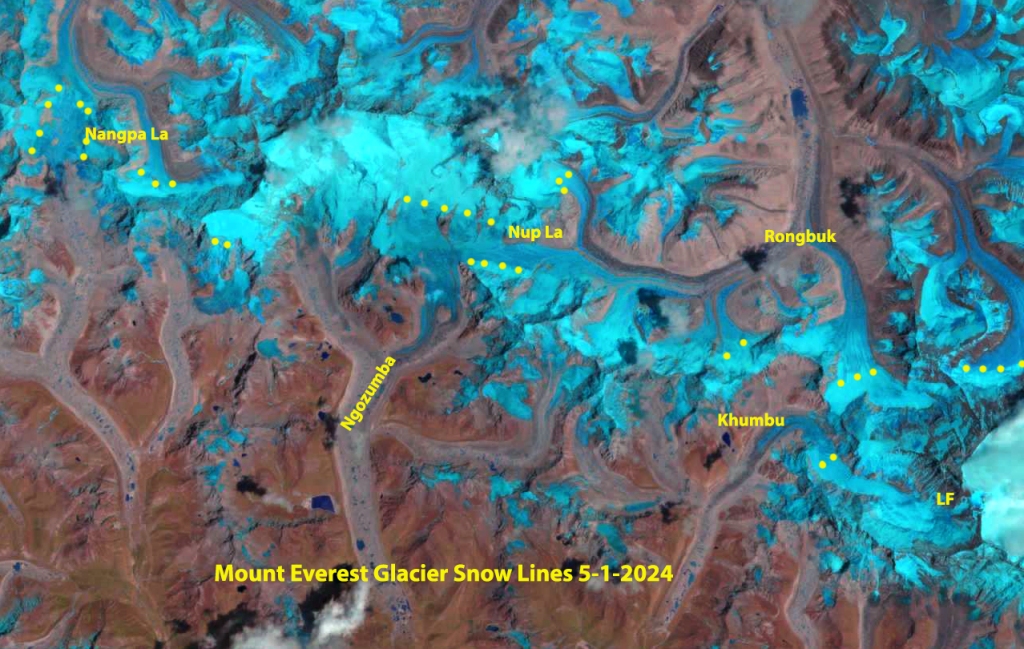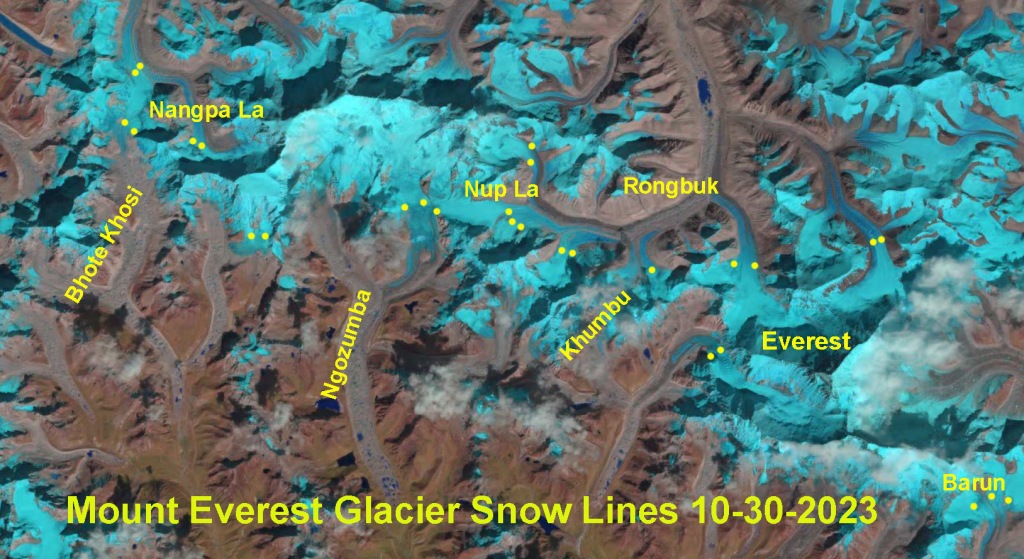
This is a update to a previous post examining high snow lines through the winter on Mount Everest Region glaciers. Here we examine imagery from October 2023 through early May 2024 illustrating the rise in snow line into January and the continue high elevation into the pre-monsoon season. The persistent high snow line over the last six months, indicates a lack of snow accumulation during the winter season. This is a dry season, yet typically leads to extensive, though not particularly deep snow cover. There were a few smaller snow events, but the snow cover did not persist indicating that ablation has continued even above 6000 m on Mount Everest. The lack of snow leads to less infilling of crevasses on Khumbu Glacier, which are further opened by persistent ablation. On May 1 there is evident blue ice and firn areas in the Western Cwm, above the Khumbu Icefall and on the Lhotse Face above the Western Cwm at the head of the Khumbu Glacier. The relatively bare slopes above the Western Cwm also cannot generate as much avalanches that would then accumulate snow in that basin. These same slopes will yield more rock fall, with more exposed unburied rock.
In the Khumbu Icefall velocities indicates by NASA ITS LIVE are ~1m/day which leads to considerable crevasse development in the six months from November into May with very limited snow accumulation and evident ablation, image below. This season is different than the high snow lines i 2020/21 that resulted from extraordinary January heat wave. Snow cover did develop at the end of the winter/early spring (Pelto et al 2021).



The snow line on Mount Everest Region glaciers on Feb. 11, 2024 indicated by yellow dots on the Landsat image. Note that Nangpa La and Nup La-two high passes (5800-5900 m) are both snow free. The average snow line is 6000 m.






